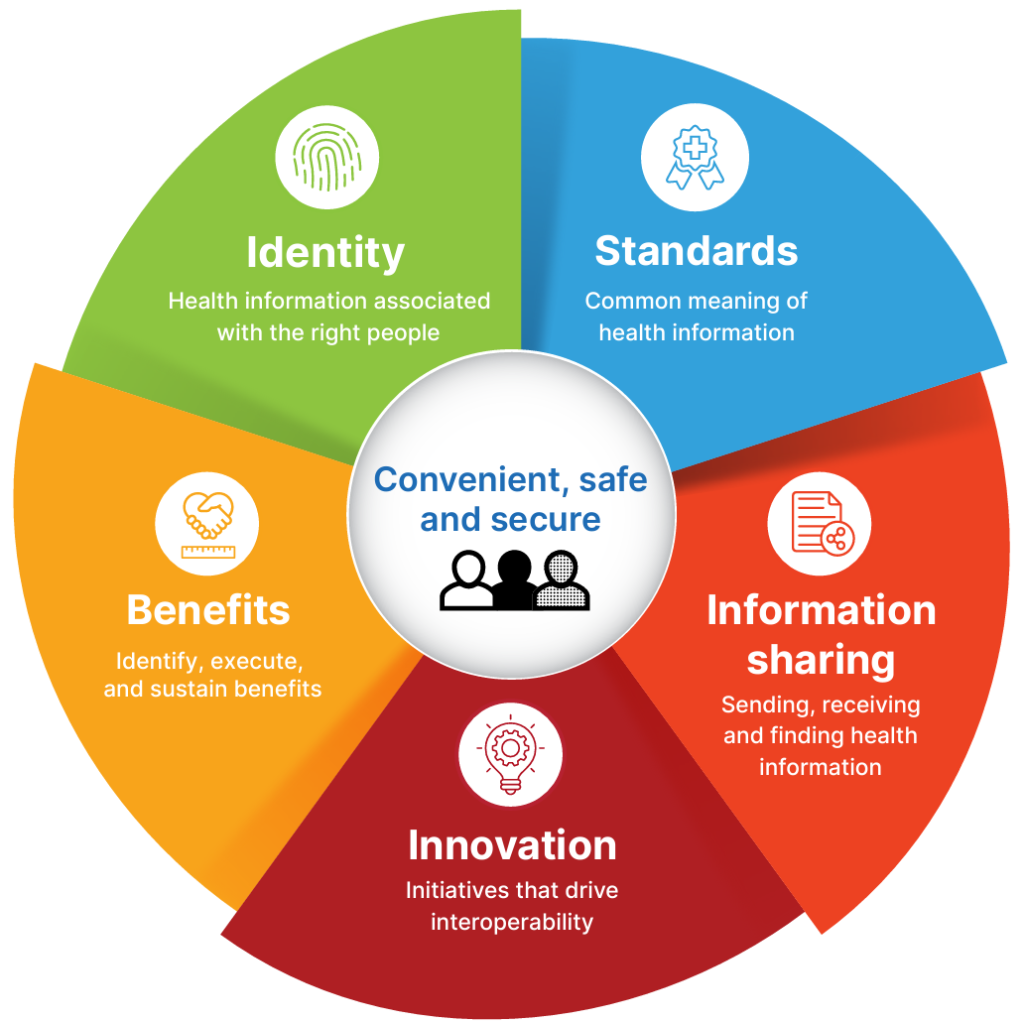4.1 Information technologies and value-based healthcare
Resource constraints and lack of investment in health information technologies and infrastructure have been barriers to the widespread use and transformation of healthcare. Banking, agriculture, retail and other sectors invest heavily in digital solutions and recognise technology as integral to the achievement of their strategic intentions (Lloyd & Craig, 2023). These industries have invested in the acquisition of hardware, software, human resources, and the development of digital applications such as online banking, self-service portals and mobile apps to deliver anywhere, anytime access to services. Sufficient resources are also required to protect digital assets and customer data from fraud and theft in health and social care organisations (Lloyd & Craig, 2023).
Implementing digital technologies and information systems and safeguarding against data breaches, ransomware and other malicious acts is a strategic priority and is particularly relevant in the health and social care industry due to the sensitive and personal nature of data stored in healthcare information systems, apps and patient records. Digital transformation of the healthcare system is reliant on the interoperability of systems and data sharing. Standards and terminologies to support technical interoperability of systems across the healthcare sector to facilitate information sharing are key initiatives. Australia is progressing a national plan to address interoperability that outlines the actions to support safe, secure, efficient and quality care and achieve a connected and consumer-focused healthcare system (Australian Digital Health Agency, 2023). To underpin this, one priority is to drive the integration and utility of digital solutions across care settings and increase the amount of real-time information available to care teams (Australian Digital Health Agency, 2023). This will improve the efficiency, effectiveness and sustainability of the health system and leverage the value that data sharing offers. The transition between care settings – for example, acute to primary, residential aged care to acute – can be supported by information, but interoperability is required to gain optimal benefits. The consistent use of agreed terminology and minimum system specifications is needed to support the secure sharing of information (Australian Digital Health Agency, 2023).
Figure 4.1 shows the five priorities identified to advance digital health interoperability in Australia (Australian Digital Health Agency, 2023). These priorities include the accurate and unique identification of individuals, supporting innovative initiatives to promote and spread interoperability such as HL7/FHIR™ (Australian Digital Health Agency, 2023) and secure information sharing with and from care providers who have valid reasons to view health information.

Source: National Digital Health Strategy 2023–2028 (Australian Digital Health Agency, 2023). Used under CC BY-NC 4.0.
Abundant data
The health industry is now generating an abundance of data, but this is not always in formats readily accessible to inform decision-making. There is huge value in using information assets effectively and efficiently. Health and social care organisations have a wide range of data and knowledge that is collected and that is essential for delivering care, optimising operational efficiency, and driving clinical, managerial and strategic decision-making. Electronic medical records (EMR), patient demographics, medical history, diagnostic test results and treatment plans are valuable data sources. EMR systems can be used and interrogated to reduce medical errors and support diagnosis and treatment. Analysis of human and financial resource management data can be used to streamline administrative processes, optimise resource allocation and identify opportunities for cost savings. Furthermore, analysis of healthcare data can facilitate population health management initiatives and disease prevention strategies to improve healthcare delivery and overall population health outcomes. The World Bank (2023) has identified that, in challenging fiscal environments, people-centred and evidence-based digital investments can help governments save up to 15 per cent of health costs.
Mobile technology
Mobile phones support individuals to access health information and services and can be used for remote patient monitoring, medication adherence tracking, telehealth consultations, health tracking through apps, and facilitating communication between healthcare providers and patients. Mobile devices can also be used for disease surveillance to gather real-time data on symptoms, outbreaks and disease spread. Mobile applications and text message reporting systems can support health authorities to monitor trends, detect outbreaks early and implement timely interventions to mitigate the spread of infectious diseases.
In geographically vast and dispersed countries such as Australia high-speed internet connections and bandwidth capacity to support mobile applications, telehealth and Internet of Things applications are needed to expand access to healthcare services. We saw the value that these digital technologies can offer through the global COVID-19 pandemic. Without the ability to teleconference during the pandemic, health service delivery would have been much more severely impacted. However, robust infrastructure and an increased deployment of such technologies is needed to better leverage the full value that these tools offer to consumers and providers.
ACTIVITY

